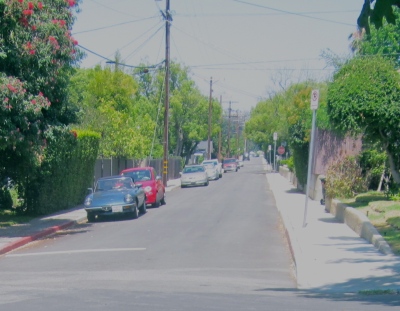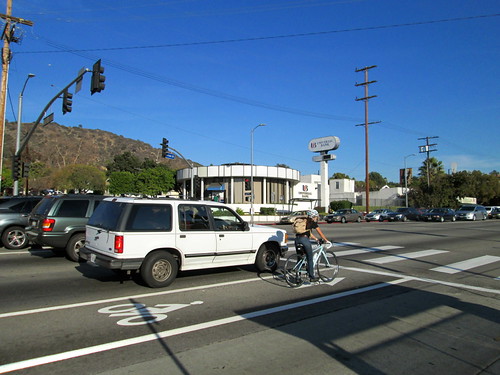***IMPORTANT UPDATE 2019/2020***
This article is being circulated by people who oppose BRT on Colorado Boulevard because they believe it supports their case. There are some important differences between the activism that re-routed the 134 Freeway and efforts to do the same for BRT.
First things first: Freeways are inherently intrusive and have no business existing in urban settings. The freeway threatened homes that stood in its path and the “less intrusive” route ultimately picked for the 134 freeway still destroyed homes. By contrast, Eagle Rock’s charming downtown Colorado Boulevard exists because there used to be dedicated transit lanes for trolleys running down the center of the street. BRT will not destroy homes and will actually restore the original, transit-oriented design of Colorado Boulevard that laid the groundwork for the Eagle Rock of today.
Secondly: This article illustrates status quo bias. People generally don’t like change. A large contingency of the old Eagle Rock believed the 134 freeway should not have been built AT ALL. And yet the people that fought the 134 freeway ended up using it, and their children grew up to use it too. And if anyone tried suggesting that the 134 freeway be removed to restore the “old Eagle Rock,” people would think the idea is crazy.
Thirdly: The 134 freeway was deliberately placed out of the way – far away from where people live – and this is why it’s a terrible place to put buses. BRT is supposed to serve communities, not bypass them. And those saying “it’s not a big deal” or “just transfer,” clearly have no lived experience of what it’s like to be dependent on transit. Imagine trying to make the proposed transfer to the edge of our community, and waiting for a bus near a freeway where there is no street life at night, or with children or with a disability, or on a 100+ degree day, or in the rain. A lot of people have no choice but to use public transit because they are young, old, disabled, or poor. We should not be imposing barriers and added difficulties for people that use transit.
Fighting to put the BRT on the 134 freeway or to keep bus lanes off Colorado Boulevard is not a noble cause. It is short-sighted and largely being motivated by people that want to preserve an aesthetic status quo that is environmentally unsustainable. Stop using this article to support your cause. For more information, visit equitableeaglerock.com and eaglerockforward.org ******
Las Flores Drive is about 20 feet wide, curb-to-curb. It is one of the narrowest streets to run contiguously for as long as it does, and to also feature sidewalks on both sides of the street. It’s no surprise people sometimes mistake it for an alley, it really is a quaint street. However, without community engagement, there is a good chance the street would not exist in its tranquil state, if at all.
134 Freeway Plans Take Shape
In the 1950s, plans to complete the 134 Freeway (then referred to as the Colorado Boulevard Freeway) started to take shape. At this point, the freeway already ran through Burbank and Pasadena, but it did not yet go through Glendale or Eagle Rock[i]. Initially, there were a few routing configurations being considered for the portion through Eagle Rock. One proposal had the freeway running south of Colorado Boulevard along Chickasaw Avenue, while the other two placed the freeway north of the boulevard, with one along Las Flores Drive and the other on Hill Drive.

The grey thick lines show the proposed Las Flores and Chickasaw freeway routes. Image credit: Eagle Rock by Eric Warren
These routes were immediately opposed by a substantial portion of the neighborhood, including local elected officials and the Chamber of Commerce. Hundreds of people attended meetings lasting several hours. In 1959, Eagle Rock’s Assembly Representative, John Collier, boldly proclaimed that a freeway through Eagle Rock “brings no benefits” to anyone [ii]. Eagle Rock residents protested on the behalf of the numerous residents that would be displaced by the freeway routing with one local at the time stating:
“A freeway that would cut Eagle Rock in two would kill this community as a lovely residential suburb.” [iii]



